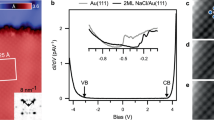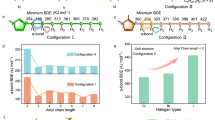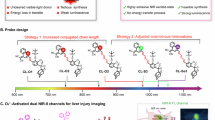Abstract
WE wish to report the production of violet chemiluminescence when alkyl halides are reacted with sodium naphthalenide at room temperature under anaerobic conditions. This effect, which can be detected by eye in a darkened room without dark adaptation, was found to be general for primary, secondary and tertiary bromides, chlorides, fluorides and iodides. Preliminary experiments show that light emission is most intense for tertiary halides and iodides.
This is a preview of subscription content, access via your institution
Access options
Subscribe to this journal
Receive 51 print issues and online access
$199.00 per year
only $3.90 per issue
Buy this article
- Purchase on SpringerLink
- Instant access to full article PDF
Prices may be subject to local taxes which are calculated during checkout
Similar content being viewed by others
References
Dimbat, M., and Harlow, G. A., Anal. Chem., 34, 350 (1962).
Sargent, G. D., Cron, J. N., and Bank, S., J. Amer. Chem. Soc., 88, 5363 (1966).
Chandross, E. A., and Sonntag, F. I., J. Amer. Chem. Soc., 86, 3179 (1964).
Chandross, E. A., and Sonntag, F. I., J. Amer. Chem. Soc., 88, 1089 (1966).
Rauhut, M. M., Sheehan, D., Clarke, R. A., and Semsel, A. M., Photochem. Photobiol., 4, 1097 (1965).
Author information
Authors and Affiliations
Rights and permissions
About this article
Cite this article
HAAS, J., BAIRD, J. Sodium Naphthalenide–Alkyl Halide Chemiluminescence. Nature 214, 1006 (1967). https://doi.org/10.1038/2141006a0
Received:
Published:
Issue date:
DOI: https://doi.org/10.1038/2141006a0



